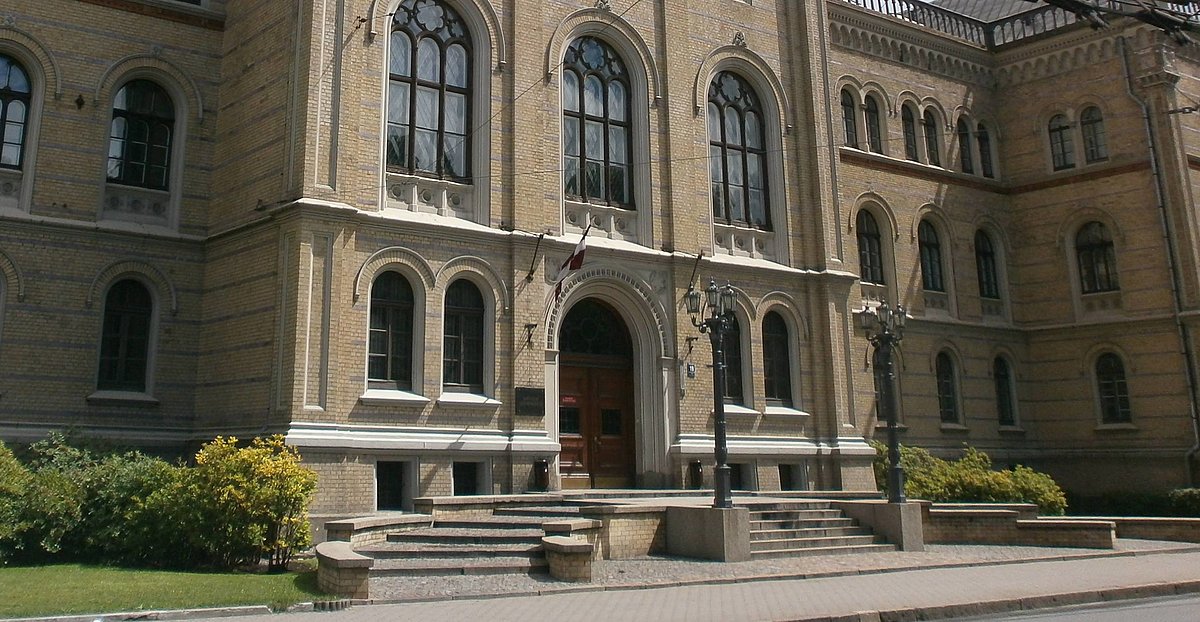
Students who really want to graduate from the University must not ascend or descend the central stairs of UL main entrance.
The myth of stairs in student circles has been around for a very long time, and everyone in the UL family knows about it. Legend has it that a student who climbs the central staircase entering the main building of the University of Latvia, Raiņa bulvāris 19, will never graduate from this university and receive its diploma. Reasons can be various – failed exam, forgetfulness, laziness or other coincidences of life. On the eve of the Alma Mater centenary, we asked the specialists at the University of Latvia Museum why these epic stairs have gained the notoriety. We found that the story came about at the time when most of the people who came to the university on foot used the side stairs, whereas those who had some means of transportation, ascended the central stairs. Imagine, for example, a carriage of a wealthy student’s family. Indeed, it could be that the myth arose because those UL students who travelled in style and came up the central stairs remained at the university much longer and graduated much less frequently.
The female students at the University of Latvia, Faculty of Humanities pass examinations more successfully if they wear a blue dress.
The story of the blue dress at the Faculty of Humanities (the Faculty of Philology at the time) was particularly popular in the 1980s, when many Western countries experienced a rapid economic upswing, evolution of production and technologies, and, consequently, fashion and style – extravagant hairstyles, bright colours and expressive silhouettes. Meanwhile, in the hallways of the FH, as the exam session approached, the girls wore blue dresses, as they supposedly bought success in exams. Ilze Tumulkāne, a graduate of FH, explains why a blue dress brought advantages: “This legend has its origins in a professor who wore a blue dress day after day. There were others who particularly liked this outfit. And thus it came about that they went to the exam or test and put on the favourite blue dress, receiving a good grade,” remembers the graduate. I. Tumulkāne has not tested the legend herself, and therefore cannot claim the 100% efficacy of the method from her own experience, but such a story wandered the hallways. It was similar with amber beads. The students used to pass them on to each other during the exam breaks to earn a better grade from the professor.
The main entry facing Raiņa bulvāris.
Students, staff and guests visit the University of Latvia and attend seminars and lectures, daily opening the great doors leading within from Raiņa bulvāris. This legend is more of a joke and explains why the main entrance of the University of Latvia central building, presently housing the Faculties of Law, Theology and Computer Science, is facing Raiņa bulvāris rather than Merķeļa iela.
It was started by a confused visitor in the 1920s, circling the building and attempting the entry. When he met an employee, he asked why the Alma Mater building mostly opens its doors to Raiņa iela, as it was called at the time, instead of the other grand entry. “Because there is already one circus on Merķeļa iela,” replied the encountered and somewhat disparaging employee. We decided to find out why the door toward Raiņa bulvāris is still considered the main entry. A representative of the University of Latvia, Department of Infrastructure explains that at present the other door is only used when funeral obsequies are conducted at the university’s Great Hall. The door toward Merķeļa iela is an easy access to the Great Hall and permits a respectful farewell.

 CONFERENCE
CONFERENCE